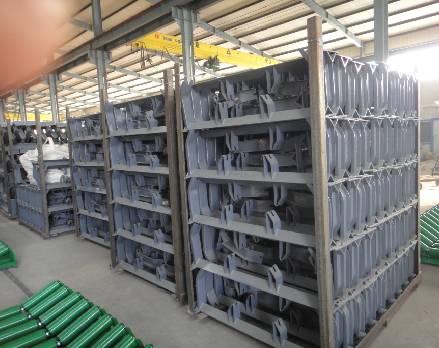 Afrikaans
Afrikaans  Albanian
Albanian  Amharic
Amharic  Arabic
Arabic  Armenian
Armenian  Azerbaijani
Azerbaijani  Basque
Basque  Belarusian
Belarusian  Bengali
Bengali  Bosnian
Bosnian  Bulgarian
Bulgarian  Catalan
Catalan  Cebuano
Cebuano  Corsican
Corsican  Croatian
Croatian  Czech
Czech  Danish
Danish  Dutch
Dutch  English
English  Esperanto
Esperanto  Estonian
Estonian  Finnish
Finnish  French
French  Frisian
Frisian  Galician
Galician  Georgian
Georgian  German
German  Greek
Greek  Gujarati
Gujarati  Haitian Creole
Haitian Creole  hausa
hausa  hawaiian
hawaiian  Hebrew
Hebrew  Hindi
Hindi  Miao
Miao  Hungarian
Hungarian  Icelandic
Icelandic  igbo
igbo  Indonesian
Indonesian  irish
irish  Italian
Italian  Japanese
Japanese  Javanese
Javanese  Kannada
Kannada  kazakh
kazakh  Khmer
Khmer  Rwandese
Rwandese  Korean
Korean  Kurdish
Kurdish  Kyrgyz
Kyrgyz  Lao
Lao  Latin
Latin  Latvian
Latvian  Lithuanian
Lithuanian  Luxembourgish
Luxembourgish  Macedonian
Macedonian  Malgashi
Malgashi  Malay
Malay  Malayalam
Malayalam  Maltese
Maltese  Maori
Maori  Marathi
Marathi  Mongolian
Mongolian  Myanmar
Myanmar  Nepali
Nepali  Norwegian
Norwegian  Norwegian
Norwegian  Occitan
Occitan  Pashto
Pashto  Persian
Persian  Polish
Polish  Portuguese
Portuguese  Punjabi
Punjabi  Romanian
Romanian  Russian
Russian  Samoan
Samoan  Scottish Gaelic
Scottish Gaelic  Serbian
Serbian  Sesotho
Sesotho  Shona
Shona  Sindhi
Sindhi  Sinhala
Sinhala  Slovak
Slovak  Slovenian
Slovenian  Somali
Somali  Spanish
Spanish  Sundanese
Sundanese  Swahili
Swahili  Swedish
Swedish  Tagalog
Tagalog  Tajik
Tajik  Tamil
Tamil  Tatar
Tatar  Telugu
Telugu  Thai
Thai  Turkish
Turkish  Turkmen
Turkmen  Ukrainian
Ukrainian  Urdu
Urdu  Uighur
Uighur  Uzbek
Uzbek  Vietnamese
Vietnamese  Welsh
Welsh  Bantu
Bantu  Yiddish
Yiddish  Yoruba
Yoruba  Zulu
Zulu wing pulley conveyor
The Wing Pulley Conveyor A Study in Efficiency and Innovation
In the realm of material handling systems, conveyor belts play a pivotal role in enhancing productivity and efficiency across various industries. Among the various types of conveyor components, the wing pulley has emerged as a favored choice, particularly for its unique design and operational advantages. This article delves into the wing pulley conveyor, exploring its structure, benefits, and applications.
Understanding Wing Pulleys
A wing pulley is characterized by its distinct shape, which includes two or more “wings” or projections extending outward from the pulley body. These wings are designed to assist in controlling material movement and deterring unwanted bulk material buildup. The design is typically made from robust materials to withstand heavy loads and harsh operating conditions.
The primary role of the wing pulley in a conveyor system is to serve as a tail pulley or an end pulley, where the belt wraps around it, allowing the belt to change direction or elevate material. Its unique configuration not only minimizes the potential for material spillage but also enhances cleaning efficiency and extends the lifespan of the conveyor.
Benefits of Wing Pulley Conveyors
1. Improved Material Flow The design of the wing pulley facilitates better material movement, especially in heavy-duty applications. The wings help in directing the material, reducing the likelihood of blockages that can halt operations.
2. Enhanced Cleaning and Maintenance The winged design prevents the build-up of material on the pulley surface, promoting cleaner operations. This minimizes the need for frequent maintenance checks and cleaning processes, ultimately saving time and labor costs.
3. Reduced Belt Wear Conventional pulleys often experience high levels of wear due to the friction between the belt and the pulley surface. The wing pulley's design alleviates some of this friction, resulting in reduced wear on the conveyor belt itself. This prolongs the belt's lifespan, thus reducing replacement costs.
wing pulley conveyor

4. Increased Safety By mitigating material spillage and facilitating a more controlled flow, wing pulleys enhance workplace safety. Reduced spillage means fewer slip hazards, and proper material containment ensures compliance with safety regulations.
5. Versatile Applications Wing pulley conveyors are highly versatile and can be utilized in various settings, including mining, agriculture, and manufacturing. Their ability to handle large volumes of material makes them ideal for heavy-duty environments.
Applications of Wing Pulley Conveyors
Wing pulley conveyors are employed across several industries due to their efficiency and reliability. In mining, for instance, they effectively transport ores and aggregates while minimizing downtime caused by material build-up. In agriculture, these conveyors help in the handling of grains and feed materials, ensuring smooth transitions from storage to processing.
In manufacturing, wing pulleys are used in assembly lines for the swift movement of products, parts, or materials, enhancing overall production efficiency. The adaptability of wing pulleys to different applications, coupled with their operational advantages, has made them a mainstay in various conveyor systems.
Challenges and Considerations
While wing pulley conveyors offer numerous benefits, they are not without challenges. The initial installation costs may be higher compared to standard pulleys, and the design may require specific considerations based on the particular materials being conveyed. Furthermore, the angle of the wings can impact performance, necessitating careful planning and consideration during system design.
Conclusion
In the continuously evolving landscape of material handling, the wing pulley conveyor stands out as an innovative solution that combines efficiency, safety, and durability. As industries strive for higher productivity and lower operational costs, the wing pulley will undoubtedly play a significant role in shaping the future of conveyor technology. Investing in such advanced systems not only streamlines operations but also contributes to safer and more reliable workplace environments, making it a smart choice for businesses aiming to enhance their material handling processes.
-
Revolutionizing Conveyor Reliability with Advanced Rubber Lagging PulleysNewsJul.22,2025
-
Powering Precision and Durability with Expert Manufacturers of Conveyor ComponentsNewsJul.22,2025
-
Optimizing Conveyor Systems with Advanced Conveyor AccessoriesNewsJul.22,2025
-
Maximize Conveyor Efficiency with Quality Conveyor Idler PulleysNewsJul.22,2025
-
Future-Proof Your Conveyor System with High-Performance Polyurethane RollerNewsJul.22,2025
-
Driving Efficiency Forward with Quality Idlers and RollersNewsJul.22,2025





























